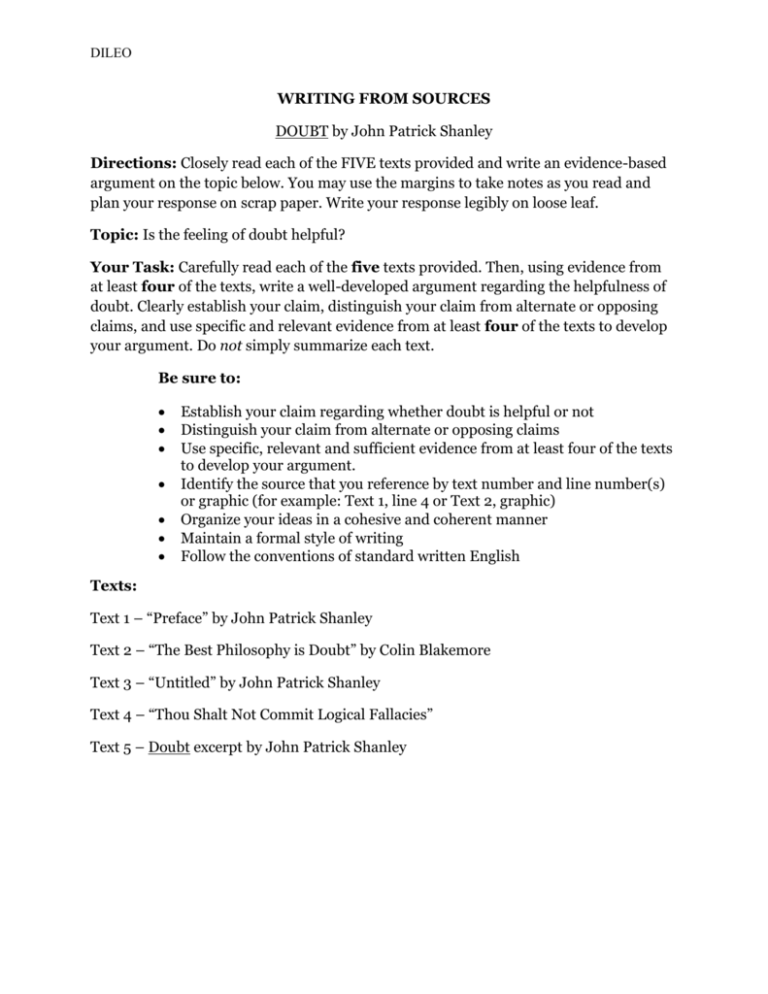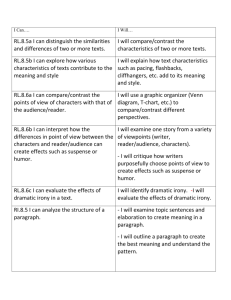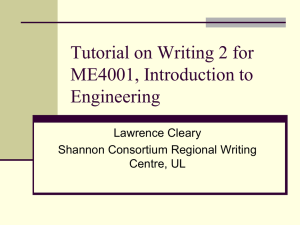DILEO WRITING FROM SOURCES DOUBT by John Patrick Shanley
advertisement

DILEO WRITING FROM SOURCES DOUBT by John Patrick Shanley Directions: Closely read each of the FIVE texts provided and write an evidence-based argument on the topic below. You may use the margins to take notes as you read and plan your response on scrap paper. Write your response legibly on loose leaf. Topic: Is the feeling of doubt helpful? Your Task: Carefully read each of the five texts provided. Then, using evidence from at least four of the texts, write a well-developed argument regarding the helpfulness of doubt. Clearly establish your claim, distinguish your claim from alternate or opposing claims, and use specific and relevant evidence from at least four of the texts to develop your argument. Do not simply summarize each text. Be sure to: Establish your claim regarding whether doubt is helpful or not Distinguish your claim from alternate or opposing claims Use specific, relevant and sufficient evidence from at least four of the texts to develop your argument. Identify the source that you reference by text number and line number(s) or graphic (for example: Text 1, line 4 or Text 2, graphic) Organize your ideas in a cohesive and coherent manner Maintain a formal style of writing Follow the conventions of standard written English Texts: Text 1 – “Preface” by John Patrick Shanley Text 2 – “The Best Philosophy is Doubt” by Colin Blakemore Text 3 – “Untitled” by John Patrick Shanley Text 4 – “Thou Shalt Not Commit Logical Fallacies” Text 5 – Doubt excerpt by John Patrick Shanley DILEO Paragraph One: 1. Topic Paragraph—Introduces focus (purpose) for argument/Source(s) w/ titles & authors a. Clearly state if doubt is helpful or not i. Allude to how this will be proven b. Distinguish your claim from alternate claims Paragraph Two: 2. 1st idea (First Chosen text) a. How this text relates 3. Specific example (For example, For instance,) (Reference text and line number or graphic) 4. Connection between example, 1st idea, and Topic Paragraph (This shows, In other words, To clarify, Simply stated, That is,) 5. Transition into 2nd idea (Second Chosen text) (In addition, Furthermore, Along with, Together with, Secondly, Equally important, Moreover, Next,) a. How this text relates 6. Specific example (Reference text and line number or graphic) 7. Connection between example, 2nd idea, and Topic Paragraph (This demonstrates, This goes to prove, This illustrates,) Paragraph Three: 8. Transition into 3rd idea (Third Chosen Text) (In addition, Furthermore, Along with, Together with, Secondly, Equally important, Moreover, Next,) 9. Specific example (Reference text and line number or graphic) 10. Connection between example, 3rd idea, and Topic Paragraph 11. Transition to 4th idea (Fourth Chosen Text) 12. Specific example (Reference text and line number or graphic) 13. Connection between example, 4th idea, and Topic Paragraph 14. Summary Sentence—Appropriate transition and reinforcement of topic paragraph (Therefore, Evidently, Clearly, Hence, In summary, In closing, In the final analysis,) a. reinforce your claim







